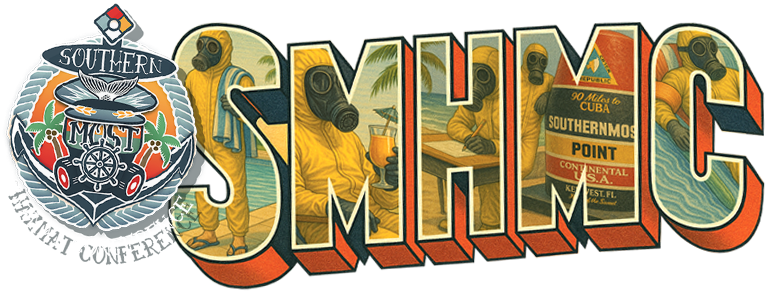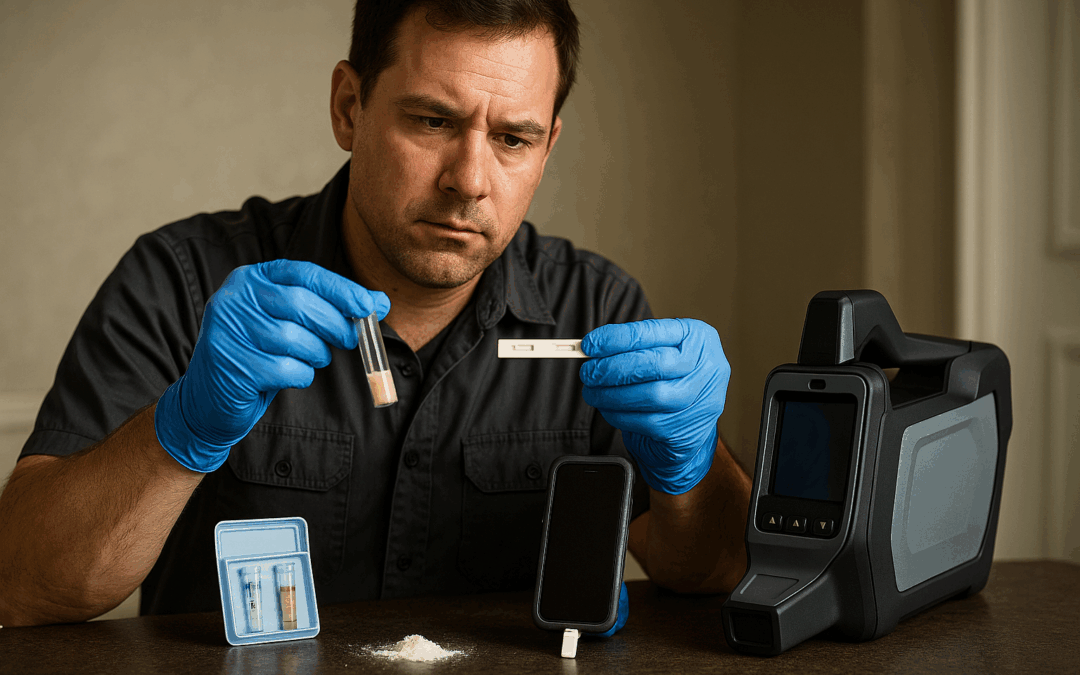How Do You Detect Fentanyl? Start With the Right Question
When I asked Mike and Bobby to walk me through fentanyl detection, the first thing they said was, “You need to ask why you’re trying to detect it.”
Turns out, there are two main reasons:
- For criminal prosecution This involves collecting evidence that can be used in court. Neither Mike nor Bobby are legal experts, and they made that crystal clear. Their takeaway: if your agency expects you to collect evidence, make sure your protocol aligns with what your AHJ requires.
- For responder safety This is where the bulk of our conversation focused. Most of us aren’t in CSI. We’re out there trying to stay safe, make good calls on PPE, and ensure we don’t end up as patients. Detection for safety purposes doesn’t need courtroom-level precision, but it does need to be consistent, quick, and practical.
“None of these meters are 100%,” says Bobby. “Would you bet your life on one?” The answer, unanimously, was no.
A Range of Budgets, A Range of Tools
Departments vary wildly in resources. Some can barely fuel the rigs, others are flush with grant money and gear. So we covered everything from $1 test strips to mass spectrometry systems that cost as much as a small house.
Colorimetric Kits: Cheap and Tricky
These are the old-school field kits that rely on chemical reactions to show color changes. They’re affordable, but require close contact with the substance and sharp observation skills.
Here’s the catch: color interpretation is subjective. One in twelve men is colorblind and may not even know it. As Mike put it, “We can’t even agree what color a tennis ball is.”
While these kits might work for some substances, they also require handling fentanyl directly – a major safety risk.
Smartphone-Enhanced Test Kits: A Step Forward
Companies like DetectaChem are starting to bridge the gap with phone-based analysis to remove human error. Bobby called them “almost giddy-worthy” – but he and Mike both admitted they hadn’t field-tested them. If you have, they want to hear from you.
Raman Spectroscopy: High-Tech, High Limitations
Raman devices like the TruNarc and TacticID are popular. They work by analyzing light scattered off a substance to determine its “fingerprint.”
Pros:
- Non-contact testing
- Can scan through glass or plastic
Cons:
- Can’t reliably detect trace amounts
- Needs a large enough sample
- Can be thrown off by fluorescent materials (common in fentanyl fillers)
“You’re not going to scan your bunker gear and detect trace fentanyl,” says Mike. “It just doesn’t work like that.”
FTIR: Raman’s Cousin
FTIR (Fourier Transform Infrared) spectroscopy is often used in conjunction with Raman to improve identification. Where Raman looks at scattered light, FTIR looks at absorbed light.
They’re complementary technologies but share similar drawbacks:
- Require a known library of compounds
- Struggle with mixtures and low concentrations
- Can miss analogs not programmed into the system
“It tells you what’s missing instead of what’s there,” Bobby explained. “It’s like looking for fingerprints by seeing what isn’t showing up.”
908 Devices & Mass Spec: Trace-Level Capability
This one turned heads. The handheld mass spec device from 908 Devices has evolved significantly. Early adopters faced issues, but new firmware updates have made the tech reliable according to field users.
This device can detect fentanyl at trace levels – as low as 1% in mixtures. And that’s a game-changer. It’s also ideal for checking PPE contamination after decon.
“They want you to dilute the sample down three times just so it doesn’t overwhelm the sensor,” Bobby said. That’s how sensitive it is.
The Dark Horse: Fentanyl Test Strips
This one shocked me. Fentanyl test strips, originally made for urine testing, are now being repurposed to test street drugs and suspicious powders.
A study by Johns Hopkins and Bloomberg showed that these strips could detect fentanyl concentrations as low as 0.13 micrograms per milliliter. In comparison:
- Raman detection limit: ~25 µg/mL
- FTIR: ~25 µg/mL
- Fentanyl strip: 0.13 µg/mL
That’s 192x more sensitive than some $60,000 meters.
Cost? About a dollar per strip.
Mike joked that you could pick one up at a Piggly Wiggly. It might be a joke, but it makes the point: sometimes the cheapest tech gives the clearest answer.
Caveat: These strips haven’t been validated by NIOSH or any official hazmat standards. But when it comes to quick field-screening, they show real promise.
Real-World Advice for First Responders
So what’s the bottom line here? Here’s what Mike, Bobby, and I kept coming back to:
- No detection tool is foolproof. Always assume the worst when unknown powders are involved.
- Avoid direct interaction. Tools that allow remote or no-contact detection reduce risk.
- Understand your tools. Know what technology you’re using, what it can detect, and what its limitations are.
- Layer your approach. Combine Raman, FTIR, and maybe even those test strips to increase reliability.
- PPE always matters. Don’t rely solely on meters to tell you what gear to wear. Treat every substance as potentially lethal.
As Bobby said: “Treat everything like it could be fentanyl. Not because we’re alarmist – because it’s just smart.”
Want to Share Your Experience? Now’s the Time
We’re putting together a follow-up show based on your experiences. If you’ve used a detection tool in the field – whether it was a win or a fail – send us a note. Anonymity is guaranteed. Want to come on the show? Even better.
Email: feedback@thehazmatguys.com
Let’s build something that helps the entire responder community make safer, smarter calls.



Very interesting read. Its good to hear there is a test for it. I saw a test at Walgreens yesterday and didnt know it would work. We actually have a product that removes Fentanyl and other drugs called S4FE-D:)